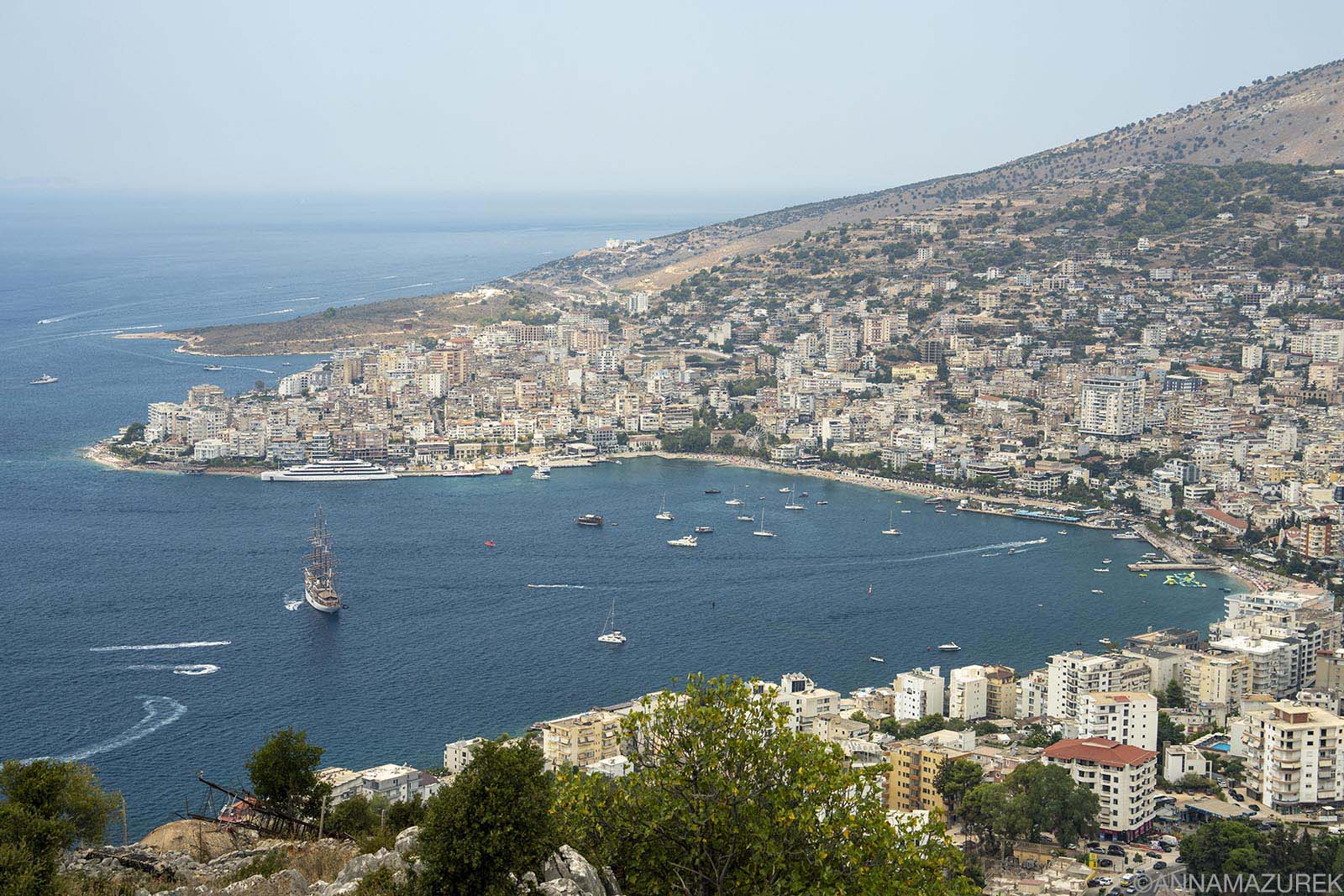 Bonifacio, Corsica // I used an EU SIM card I bought in Italy for a trip to three different countries in the Mediterranean with success.
Bonifacio, Corsica // I used an EU SIM card I bought in Italy for a trip to three different countries in the Mediterranean with success.
One of my biggest travel pet peeves is finding affordable cellular data plans abroad. Historically, I’ve always bought local SIM cards because they are significantly cheaper than paying $10/day for my normal U.S. plan (Verizon) to work abroad. (Also, it’s absurd that both Verizon and AT&T charge $10/day on top of your regular phone plan for international coverage.) Keep reading for more details on eSIM cards for international travel!
Affiliate links are used in this post. If you make a purchase, I earn a small commission at no cost to you, which goes toward blog maintenance costs. I only recommend products and companies I truly love and use.
What is an eSim card?
It’s essentially a digital SIM card included in many newer phones. (Apple nixed the SIM card tray on U.S. models with the iPhone 14, so eSIMs are the only option for those models and newer ones going forward.) It makes things more convenient since people no longer have to go to a store to get a physical SIM card and find a tool or paper clip to open the SIM tray! The main benefit of an eSIM card is that it can work in mutliple countries, so it eliminates the hassle of buying multiple SIM cards. Plus, it’s much cheaper than paying for an internatinal plan through a U.S. carieer.
In certain parts of the world, you can still buy the newest iPhone model with a physical SIM tray, especially in Asia. The only negative side to buying an iPhone abroad is that the AppleCare plan doesn’t include the theft option.
What are the cons of an eSIM card for travel?
They can be tricker to activate and aren’t compatible with all phones or phone plans. I had issues with my previous phone (iPhone 13 Pro) initially but have zero issues with my current newer iPhone. Now, most eSIM apps will tell you if your phone is capable.
The biggest problem with eSIM cards is that they don’t cover some remote parts of the world. Options are either limited to expensive. I struggled to find an affordable eSIM card for my trip to Laos in Southeast Asia earlier this year but was able to buy an affordable one from a local provider at the airport with no issues.
Also, learn from my mistakes: If you’re buying a regional or global eSIM card, be sure to check that every country on your trip is covered by your plan.
How do I get an eSIM card?
Simply download the app on your phone from any of the eSIM card brands, including Airalo or Saily. Choose and purchase a global, regional or local eSIM card, then follow the on-screen instructions to install, which I recommend doing before leaving for your trip. (The apps will even tell you right away if your phone is compatible before purchasing.) In the cellular settings on your phone, make sure the eSIM card is selected for cellular data. The plan will not activate until you arrive in the destination.
 Sarandë, Albania // I used an Airalo 10 GB Europe eSIM for seamless connectivity hopping between Greece, Croatia, Albania and Montenegro recently. Since the latter two are not E.U., so I’d had pervious issues with a physical SIM card bought in Greece not working in those countries. The eSIM solved the issue.
Sarandë, Albania // I used an Airalo 10 GB Europe eSIM for seamless connectivity hopping between Greece, Croatia, Albania and Montenegro recently. Since the latter two are not E.U., so I’d had pervious issues with a physical SIM card bought in Greece not working in those countries. The eSIM solved the issue.
Do eSIMs offer unlimited data?
Yes, there are several companies that offer the option, but read the fine print. The word “unlimited” is deceptive because there’s always a “fair use” data limit, where you get a set amount of high-speed data (usually 3-5gb) per day. After that, data speeds are throttled, which makes sense. This also really affects hotspot users. I’ve seen brands that cap hotspot data at only half a gig a day, which is insane.
Most unlimited plans are more customizable allowing you to pick exactly the number of days you need but are always more expensive that plans with set data limits.
Are eSIMs cheaper than buying a regular SIM card for travel?
It depends. While they are cheaper than paying for a U.S. international plan, they are not cheaper than buying a local physical SIM card in most places. In Thailand, I pay roughly $10/month for an unlimited plan and in Laos, I paid $4 for 30 GB a few months ago.
With companies like Airalo or Saily, it’s $16-20 for 5GB in various regions of the world, which is a good deal and more convenient if you’re country-hopping. If you’re staying in one place long-term, it’s still cheaper to buy a local SIM card.
Always avoid buying one in an airport—everything is usually half-price outside the airport! I’ve found physical SIM cards to be slightly less expensive than a regular SIM, but most phones don’t have this option anymore.
Do eSIMs work for travel in the U.S.?
Yes, Airalo, especially, has plans in the U.S. This spring, I ran out of data on my Verizon plan right before a three-month trip to Europe, so I but didn’t want to renew for another month. It worked perfectly with no issues. This is great for people traveling in the U.S. or expats returning for a short visit. Here is a list of their U.S. plan options.
Do eSIMs support personal hotspots?
The short answer is yes but not all do! This is a dealbreaker for me because I work while I’m traveling and most of the time, I find that WiFi networks are terrible. I rely heavily on my personal hotspot for WiFi on my computer for Zoom calls.
I’ve had great success using my personal hotspot with both country-specific and regional Airalo eSIMs in Asia recently in Japan, Korea and Southeast Asia. Airalo says it’s available if the carrier supports it, so it’s hard to say if it will work every time, but it’s always worked for me.
Read my reviews of Airalo eSIMs & Saily eSIMs in Southeast Asia & Japan!
Are eSIMs safe? Are there privacy concerns with eSIMs?
eSIM providers require you to use their app to activate and use the service, which means you can be tracked. Apple users should turn on the “ask app not to track” setting to avoid this. I’m sure Android devices have a similar setting. In some ways, eSIMs are safer.
If your phone is stolen, you can easily switch the service off your phone to prevent your number from being stolen. If you’re really concerned, you can also use a VPN for added security. (Saily eSIM cards actually include a VPN.) I personally use NordVPN, which is the company that owns Saily. For more about VPNs, check out my recent post about two-step verification and traveling.
What is the best eSIM card for international travel?
All eSIM brands have a similar pricing structure, but eSIM cards are only as good as the local network they partner with. I’ve had great experiences with Airalo eSIMs for my iPhone, which you can read about in my Airalo review post.
To save money, use these promo codes: New customers save 15% off with NEWTOAIRALO15 and existing users save 10% with AIRALOESIM10.
The team behind NordVPN recently launched Saily, which has a wide variety of pricing options. (Use promo ANNA5 for 5% discount on Saily.) I had an overall good experience with Saily, which I review in this post.
Other brands include Nomad (which the New York Times writes about), GigSky Holafly and Flexiroam are others, but I can’t vouch for any of these. Apple also has a webpage with a list of wireless carriers worldwide that offer eSIM services.
What I do for phone data when I travel long-term
I’ve had the same U.S. phone number since I was 16. It’s the only consistent thing in my life. I’ve changed addresses so many times that I literally had to type up a Word document with all my previous addresses so I could apply for Global Entry! Since I’m often abroad for months at a time, it’s a waste of money to pay my U.S. phone bill while I’m gone since it’s worthless. And, paying $10/day for the international plan is outrageous and should be a crime! Verizon previously had a policy where you could suspend your service without billing for six months a year, but they did away with it. The only workaround that I could find was a prepaid plan. As long as I pay my bill every 60 days, I keep my number.
For example, I only paid for two months on my recent six-month trip abroad. Plus, I always downgrade to the cheapest plan. If I’m in a country for a long time, I buy a local eSIM card at the mall because airport kiosks are too expensive.
For the last two months in Europe, I’ve used strictly Airalo eSIMs, a regional Europe plan and a Greece-specific plan, which has been great.
Final eSIM Takeaways
Overall, eSIMs are the future—ready or not. They are very convenient and cheaper than paying for an international plan for your American phone plan unless you have T-Mobile. Regional eSIM plans are excellent for short trips to multiple countries. Currently, Airalo is one of the best options and is worth trying out. Saily is comparable with a great built-in virtual location feature.
If you’re going to be traveling long-term in a country or region, I still think getting an eSIM or regular SIM card from a local cellular provider is a better deal, especially in places like Southeast Asia. Certain parts of the world will take longer than others to catch up to this new technology so that’s my concern. (I’m about to head to Africa, and prices are insane!)
After much hesitation, I upgraded my iPhone last year and kept my old iPhone 13 as a backup in case I need a physical SIM card to use the hotspot to work while I’m traveling. It’s too risky for me otherwise with work to not have that feature. I haven’t needed it yet, but I’ll report back after my two months in Africa!
Happy travels!


